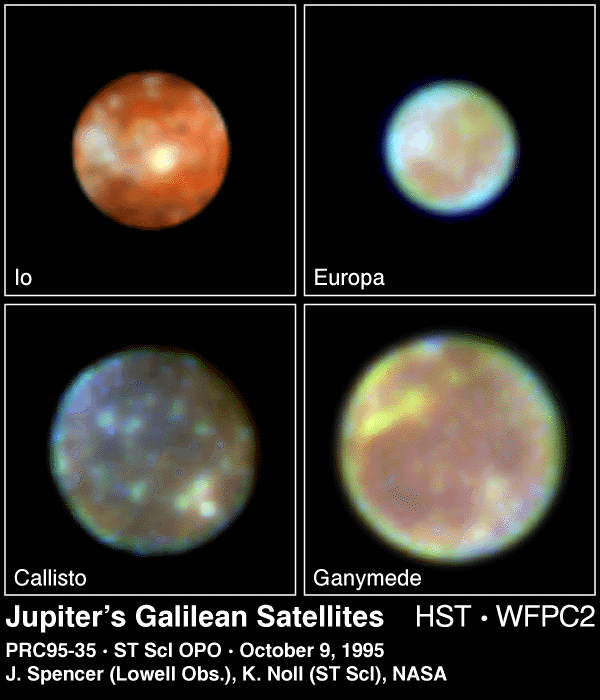Hubble Photo Gallery of the Galilean Satellites
![]()
| Home Michael Ammar Solar System Solar System Summary Sun Sun's Statistics Mercury Mercury's Statistics Venus Venus' Statistics Earth Earth's Statistics Mars Mars' Statistics Asteroid Field Asteroid Field's Statistics Jupiter Jupiter's Statistics Saturn Saturn's Statistics Uranus Uranus' Statistics Neptun Neptun's Statistics Pluto Pluto's Statistics Picture Library |
 |
| Hubble Photo Gallery of the Galilean
Satellites This is a Hubble Space Telescope family portrait of the four largest moons of Jupiter, first observed by the Italian scientist Galileo Galilei nearly four centuries ago. Located approximately one-half billion miles away, the moons are so small that, in visible light, they appear as fuzzy disks in the largest ground-based telescopes. Hubble can resolve surface details seen previously only by the Voyager spacecraft in the early 1980's. Hubble has charted new volcanic activity on Io's active surface, found a faint oxygen atmosphere on the moon Europa, and identified ozone on the surface of Ganymede. Hubble ultraviolet observations of Callisto show the presence of fresh ice on the surface that may indicate impacts from micrometeorites and charged particles from Jupiter's magnetosphere. (Courtesy STScI/NASA) |
Send mail to [email protected] with questions or comments
about this web site.
Copyright � 1998 Michael Ammar.